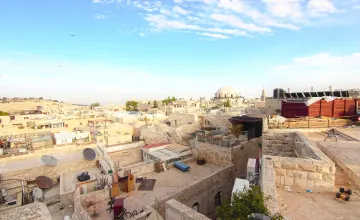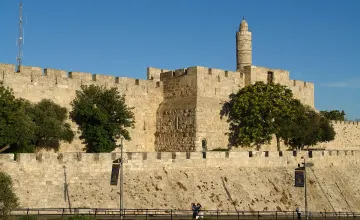Discovering Abu Gosh: A Historic Village of Hummus, Music and Monasteries
Jerusalem travel guideAbu Gosh is a lovely, picturesque village located in the Judean Hills, off a winding road between Tel Avi and Jerusalem, dating back some 6,000 years. The village is situated on a mountainside and serves as a tourist attraction, drawing in many visitors.
The village is particularly famous for its hummus restaurants. You may not reach the original Abu Shukri restaurant, but there are many restaurants serving authentic and particularly tasty food throughout the village, at affordable prices. Aside from the famous restaurants, twice a year – during Sukkot and Shavuot – the village holds a vocal music festival. The festival hosts choirs from across the country and around the world, which perform in the village’s monasteries. The village has a number of guest houses, gift shops, candle shops and glassware stores. The atmosphere in the village is unique, as it serves as a meeting point for the three religions: Jewish Israelis and tourists from around the world visit the Muslim village in order to hear music at a Christian church.
During Biblical times the village was called Kiryat Ye’arim. The Ark of the Covenant was placed there and it was a site for religious rituals. Later, during the Byzantine period, a church was built on the highest point in the village. This church was destroyed during the Persian occupation, and The Church of Our Lady of the Ark of the Covenant – which features a large statue of the Virgin Mary – was built on its ruins. These days, nuns live in the church and twice a year, during Sukkot and Shavuot, it hosts choirs from across Israel and around the world during the vocal music festival.
According to Christian belief, Abu Gosh is where Jesus appeared following his resurrection. During the Crusader period a church and stunning monastery were built in the village, which have been preserved to this day. The Benedictine Monastery is surrounded by a huge, lovely garden with ancient olive trees, an orchard and grapevines. The monastery’s interior walls feature frescos that were drawn during the thirteenth century, and a spring flows from the monastery’s crypt. The site also houses a ceramics and candle factory, operated by the monks. Six daily prayer sessions are held at the monastery, from 5:30 A.M.-8:30 P.M., and visitors are encouraged to visit during one of the sessions, for the unique opportunity to hear prayer songs performed in an 800-year-old church.
Monastery Visiting Hours: Monday-Wednesday and Friday-Saturday: 8:30 A.M.-11:30 A.M. and 2:30 P.M.-5:30 P.M.







